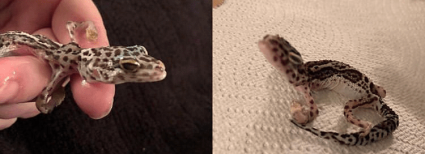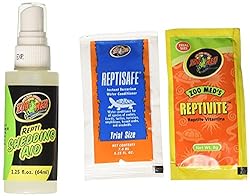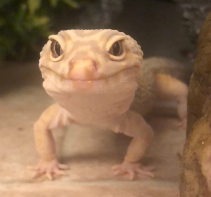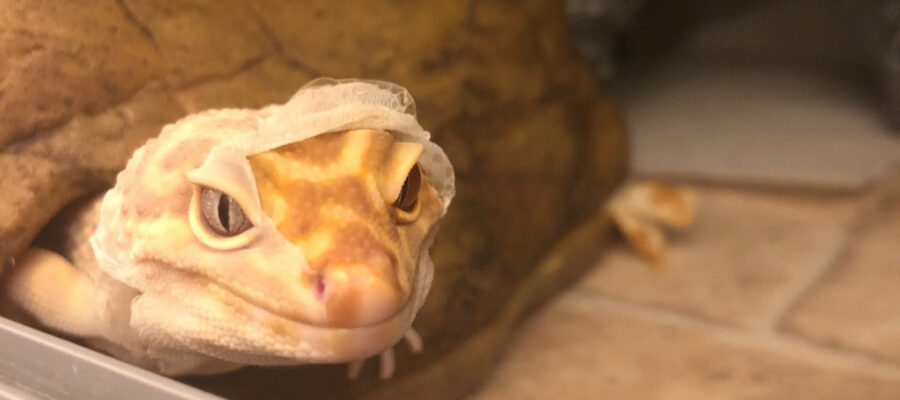Sometimes, leopard gecko owners will be faced with their pet having a bad shed, and may need to intervene to help remove any pieces that are stuck on the gecko’s body.

It is important to remove any stuck pieces, because stuck shed can build up over time, especially in places like the eyes, toes and tail, leading to restricted bloodflow and the loss of toes, eyesight or tails.
However, it is important not to just rip off any stuck shed, you need to be gentle and ease it off, and you should never ever try to “help” your gecko get its skin off when it is clearly mid-shed.
Create a temporary gecko “sauna.”
Get a tupperware box, poke air holes in it, add damp moss/ paper towels and put your gecko in it with the lid on so it can’t get out.
Place the sauna over the top of a warm (but not hot) heat source – their heat mat inside the vivarium would be perfect.
Leave for 30 minutes and check on them and see if the skin is looser. Sometimes it will just come off on its own without your extra help. Sometimes you’ll need to leave longer than 30 minutes.
Put your gecko in a shallow warm bath.
This is good for geckos struggling with belly or foot shedding. Make sure the water isn’t too hot or too cold, and make sure it is no deeper than belly-level.
This should help loosen skin along with some gentle rubbing. A damp cotton bud/q-tip can help ease off the skin, or you could try gently using your fingers and pinching the skin, letting your gecko snatch away its foot and hopefully pulling the skin with it.
Shedding aid by Zoo Med.
 Zoomed Zoo Med Repti Shedding Aid, 64 ml
Zoomed Zoo Med Repti Shedding Aid, 64 ml
This had excellent reviews on Amazon so I gave it a try.
This worked really well for the rough skin on top of my gecko’s head, but it was very difficult to put on the skin under his eye because he just won’t let me touch there without turning away.
Other people rub this on their geckos prior to shedding (when the gecko turns white) and have had great results.
 The best way to stop stuck shed is to prevent it in the first place, so always remember to check your humidity levels in your vivarium, and please PLEASE make sure you always have a moist hide for your leopard gecko!
The best way to stop stuck shed is to prevent it in the first place, so always remember to check your humidity levels in your vivarium, and please PLEASE make sure you always have a moist hide for your leopard gecko!
Do you have any more tips and advice for helping with problem sheds? I would love to hear them! Comment below.




